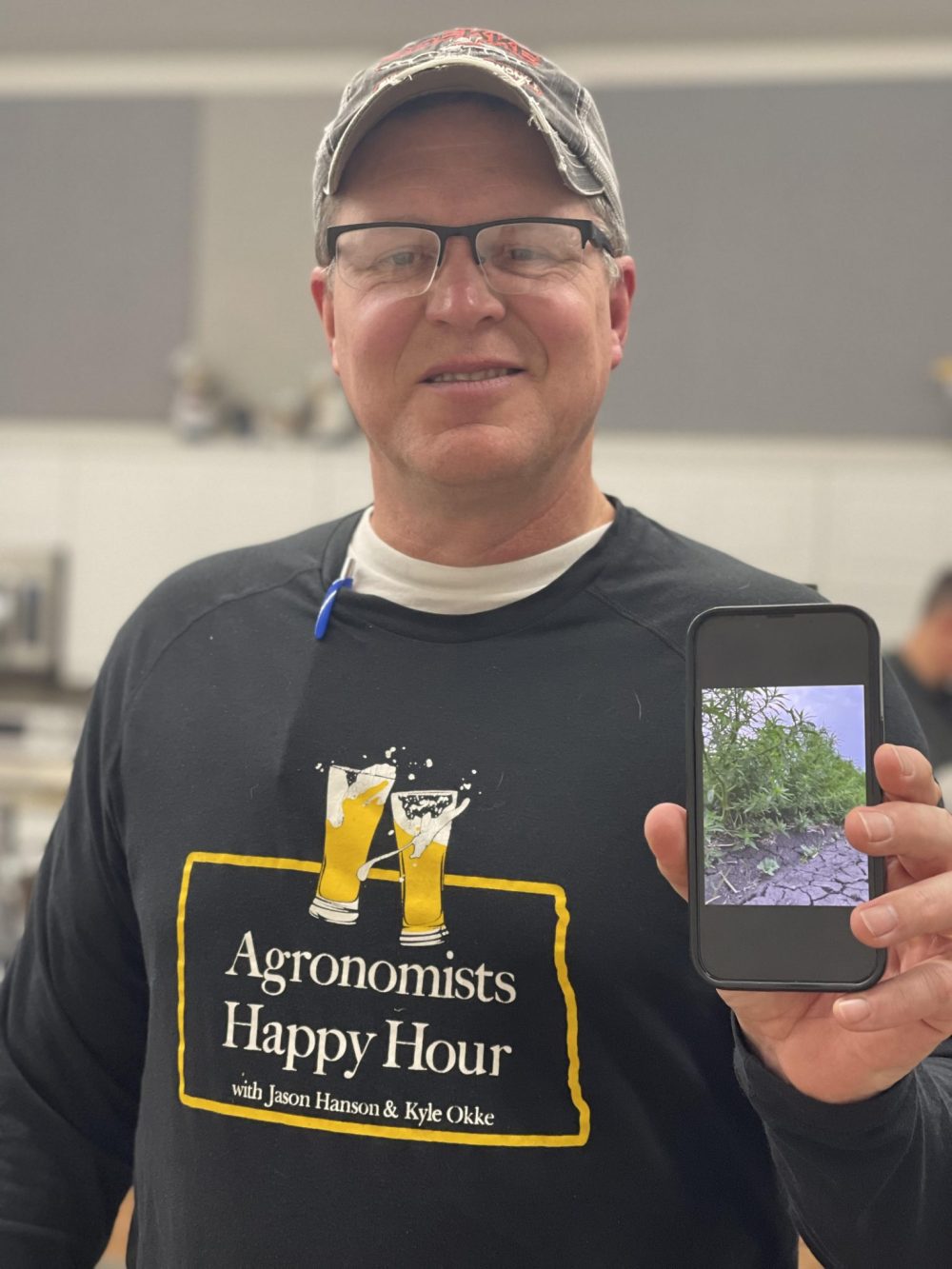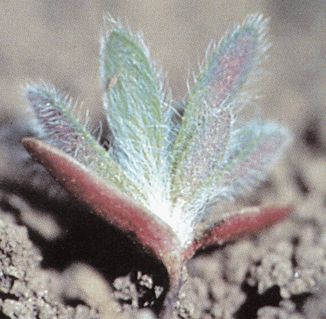‘Why do I have so many pictures of Kochia on my phone?’
Advertisement
Hey there, time traveller!
This article was published 28/02/2024 (508 days ago), so information in it may no longer be current.
Jason Hanson has a lot of pictures of Kochia on his phone. “I looked through all the pictures and videos I have. I had 142 pictures and about four or five videos that just focus on Kochia.”
Hanson’s fascination with Kochia makes perfect sense. The weed is on the rise in Manitoba, and as an independent crop consultant with RocknRoll Agronomy, he is worried about its effect on local crops.
At a recent presentation, he expressed grave concern about the growing appearance of Kochia. Also known as burning bush and summer cypress, the weed is native to Asia and central Europe and was introduced to Canada as an ornamental plant by European immigrants.

“Kochia can be difficult to manage, mostly because of its ability to spread and quickly establish itself as a major weed, particularly during drought years,” he said.
According to Manitoba Agriculture, a provincial weed survey conducted in 1997 ranked Kochia as the 14th most abundant weed in southwest Manitoba, an increase from the 26th position where it was ranked in 1986. It was ranked 24th and 30th respectively in the central and northwest regions of the province in 1997.
Kochia was not observed in the eastern or Interlake regions during the 1997 survey. Although not a predominant weed throughout Manitoba, it is a serious problem in the southwest region and in localized areas of central Manitoba, particularly on saline soils.
“This weed is becoming something that we really have to be concerned about in our part of the world,” Hanson said. “We’re continually dealing with it.”
Kochia really took charge last year, with the tremendous amount of snowfall in December, which carried through all the way through winter.
“The ground was not frozen and when that snow melted, the ground took all that moisture, and we had Kochia that was ahead of us right off the bat. So, we were having to do things that messed up our normal timing.”
Hanson pays particular attention to those areas that are habitual for Kochia.
“That’s where I started to check. The south side of a tree row, shelter belt, culverts, or rock piles. Anywhere the sun accumulates a little bit more heat units is generally where I’m going to find Kochia. It’s one of my first weeds to deal with, which means I have to manage it that way as well.”
Kochia produces a tremendous amount of seed, which Hanson said is probably the biggest issue.
“These plants can break off and they will roll and tumble, it’s like a herd of buffalo coming across the prairie. In the spring, we can go back, and we see all these trails where they criss-cross the fields, depending on the direction of the wind that day.”
Another issue with Kochia is its adaptability. “It essentially has the capacity to accumulate carbon within the plant, to help it respirate, so it can handle dry weather better. That’s the reason our Kochia has picked up is because of the drought in 2021, and the past year. Those have been two big Kochia years for us in the number of seeds produced.”
Resistance is also a concern. Kochia often takes over saline or otherwise marginal areas where crops struggle to provide competition. When left to mature, Kochia plants spread seeds over a wide area.
Each Kochia plant produces at least 15,000 seeds, often many more. Agriculture and Agri-Food Canada showed that Kochia in dense patches with low crop competition can produce millions of seeds per square metre.
Most Kochia seeds will germinate or die within one to two years, so growers can quickly reduce the soil seedbank with management steps to prevent Kochia from setting seed.

“If you ever had the privilege of picking Kochia, you will know there is such a diverse population of plants. Both in width of leaves and lengths. Some are like shrubs. Some are like trees. There’s multi-colours going on. When they pollinate, they drop pollen. I’m a firm believer that once you get to a point when that plant is still there in mid July, if you have pollen, it won’t be long until you have viable seed.”
But there is hope, Hanson said.
“There is a weakness with this plant. It does produce a tremendous amount of seed per weight of the plant, and it gets distributed across fields when the wind blows. But that seed has a very short duration of when it is viable. I can tell you that if you have a patch or an area and you make it your mission to pick or remove that, in two years you will not have Kochia in those spots. With some of that stuff, you can’t 100 percent rely on our herbicide program. You have to rely on other things.”
Since 2021 was dry, with rain in the fall, Hanson said farmers were seeing regrowth of Kochia after harvest. “We actually did a burn off of some fields in the late fall.”
He added, “I tell my growers we shouldn’t say weed control. We should think of it as weed management. Most of it is focused from the spring and the summer. One thing is there are more plants but it’s also the size. The density and size of Kochia is what makes it so durable. When it gets bigger, it protects itself. It’s a coverage issue.”
Tilling, he says, does not make a big difference. “They are going to live or die by burn offs and residuals from now on. It’s important not to let it get ahead of us. It’s always a popular conversation: you need to quit seeding and you need to start spraying during seeding season. In some cases that is the difference.”
The addition of a methylated seed oil seems to have an impact on emerged Kochia. “If products are oil based and you put in a methylated seed oil, you increase the efficacy on small dense Kochia. From a foliar standpoint, if there’s no Kochia up, I don’t put it in. But with emerged Kochia, it makes a huge difference.”
When it comes to the question of burn down or burn off, Hanson said the number one thing he tells all his clients is if it’s dry, you have to use pre-emerge, with a combination of a burn down and a residual.
Hanson is also a big proponent of Metribuzin as an herbicide option for Kochia control. “I use it any place I can. All my acres get it. It provides a burn down opportunity. Plus, you get some residual out of it.”
And at the end of the day, when it comes to managing Kochia, timing is vital.
“Start in the fall with a plan. Be super aggressive on your pre-emergent, and don’t cut rates. Sprayer speeds should come down and water volumes should go up.”
